Table of Contents
ToggleBehind the Scenes
In this guide, we will take you on a journey behind the camera to uncover the process of creating amazing real estate videos. From the initial planning stages to the final touches in post-production. You will gain valuable understanding into the Step-by-step process of a videographer in the real estate industry. Let’s explore the exciting world of real estate videography together.
a. Pre-Production Planning
Pre-production planning is the first phase of filmmaking or video production where all the necessary groundwork is laid out before actual filming begins. It involves tasks such as defining objectives, identifying the target audience, scriptwriting, location searching and equipment preparation. The main goal of pre-production planning is to ensure that everything is well-organized and prepared to facilitate a smooth production process.
Defining objectives is all about clarifying the main goals or intentions behind producing the content. The process involves several key steps. First, it is important to identify the primary purpose or objectives of the video. This includes showing a property to potential buyers or renters, promoting a real estate agency or agent to attract clients, or highlighting specific features of a property or the area around it. Understanding the target audience is equally important. Changing the video content to match with the preferences, needs, and interests of the intended audience, whether they are homebuyers, investors, or the local community, ensures its effectiveness.
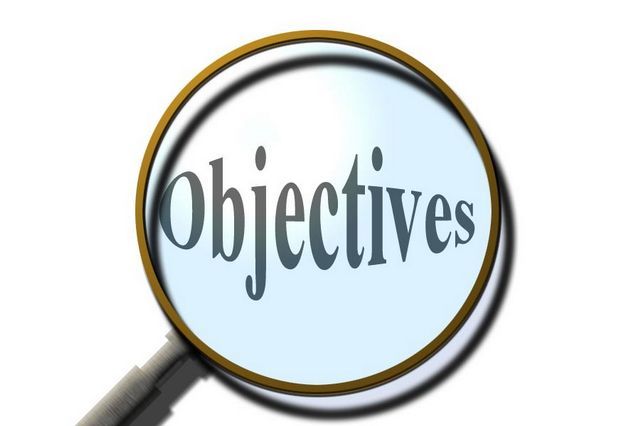
Once the objectives and target audience are defined, a clear messaging and content strategy is developed. This involves determining the key selling points, unique features, and value propositions that will be highlighted in the video content to achieve the desired objectives. When real estate professionals set clear goals and plan their content strategy accordingly, they make videos that effectively share their message, interest viewers, and achieve their desired results. These goals include selling properties or gaining recognition for their brand.
ii. Identify Target Audience
Identifying the target audience involves gathering information about the people who are likely to watch the video, such as their age, gender, interests, and preferences. This helps in creating content that appeals to their specific tastes and needs. For example, if the target audience consists mainly of young professionals looking to buy their first home, the video may focus on modern amenities and convenient location.

Understanding the Population statistics and preferences of the target audience allows for more effective communication and engagement through the video
iii. Scripting
Scripting for real estate videos involves carefully planning the conversation, narration, or key points to effectively share information about the property or real estate agency. The process begins by planning the layout of the video. This involves breaking it down into different parts such as the introduction, details about the property, and interesting aspects of the neighborhood.
Then, we figure out the important things to talk about in each part, which includes information about the property and the area around it. After that, decisions are made about the narration style, whether it’s through voice-over, on-screen text, or interviews. The script is developed to ensure the key points are communicated clearly and engagingly, customized to the target audience. Visual elements like property shots and graphics are planned to complement the narration.
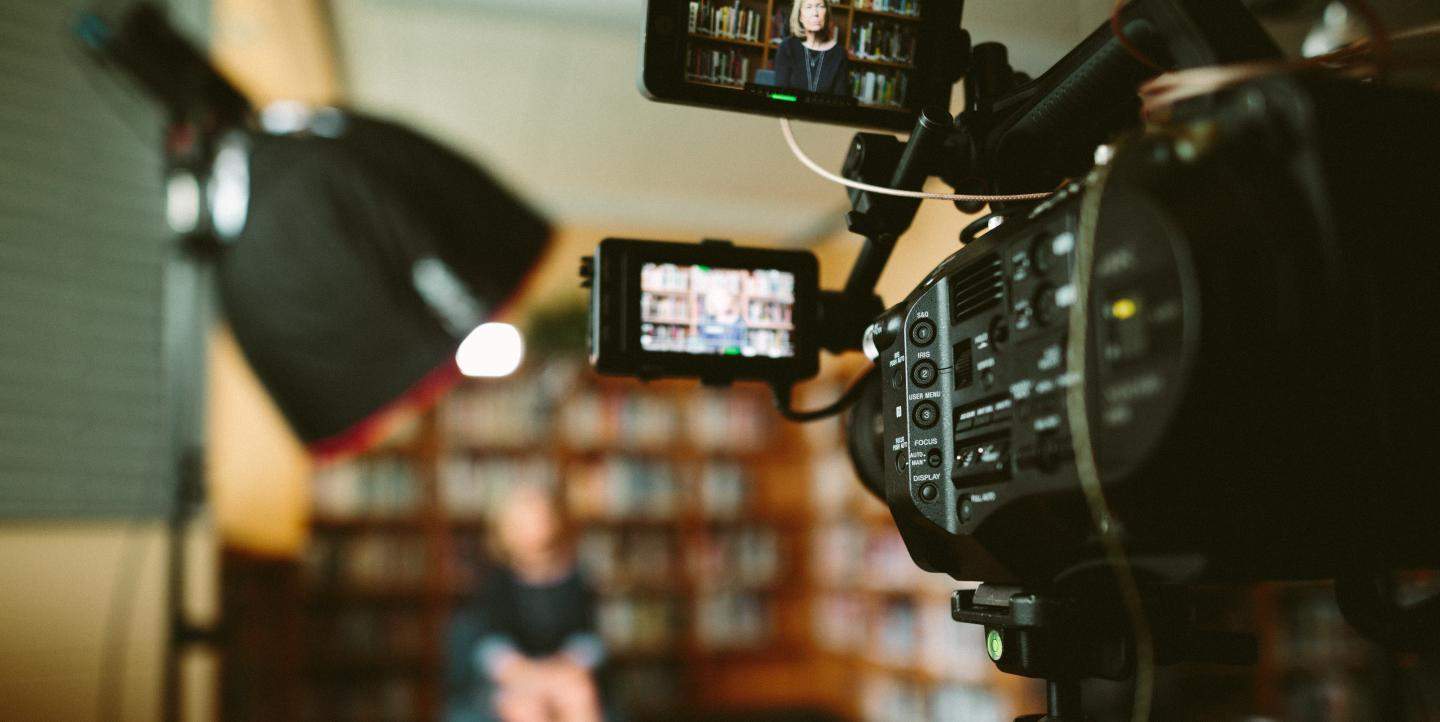
Lastly, the script undergoes thorough review for clarity and accuracy, with feedback included to refine it further. Real estate professionals create convincing videos that effectively convey information and engage viewers by scripting the content beforehand ultimately achieving their desired goals.
iv. Location Searching
Location searching is an important part of making real estate videos. It involves going to the property or properties you want to film. During this phase, various aspects are assessed to ensure effective capture of the property’s highlights. First, the property undergoes a thorough assessment to identify its layout, architecture, and unique selling points. Areas that best showcase the property’s features and amenities are identified.
Next, attention is given to lighting conditions, with observations made at different times of the day to determine optimal lighting for filming. This assessment influences the shooting schedule. Different camera angles and views are experimented with to emphasize the property’s key attributes. Both interior and exterior viewpoints are considered to offer a complete view. Specific features or areas deserving special attention in the video are noted, such as architectural details, outdoor spaces, or amenities like swimming pools or gardens.

Additionally, Potential sources of noise or distractions in the surrounding environment are determined to ensure a smooth video shoot. Locations with excessive traffic, construction noise, or visual untidiness are avoided.
The accessibility of the location for the video production crew and equipment is considered. Factors like enough parking, power outlets nearby, and any other difficulties that might affect the filming are also considered. Conducting thorough location search, enables real estate videographers pinpoint the best settings and conditions to effectively showcase the property in the video. This results in visually appealing and compelling content that attracts potential buyers or renters.
v. Equipment Preparation
Equipment preparation for real estate video production is necessary to ensure successful capture of high-quality footage showcasing the property. This involves gathering all the necessary tools and gear required for the shoot. Firstly, selecting the right cameras with high-resolution video capabilities is important. DSLR or mirrorless cameras are popular choices due to their adaptability and ability to produce excellent image quality.
Additionally, choosing suitable lenses with various focal lengths allows videographers to capture different views of the property. Wide-angle lenses are often preferred for spacious interiors and outdoor views. Stabilizing equipment such as tripods, gimbals, or sliders ensures smooth and steady camera movements, contributing to professional-looking footage. Adequate lighting is also essential, both for interior and exterior shot. Artificial lighting sources like LED panels or reflectors are used to enhance visibility and highlight key features.
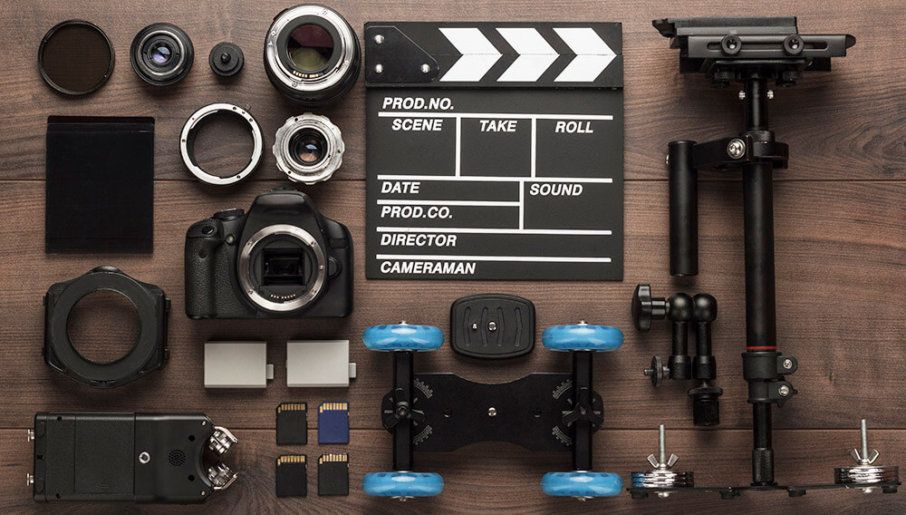
Additionally, clear audio is important to match the visual footage, achieved through the use of external microphones such as shotgun mics or lapel mics to record clear sound without background noise. Finally, bringing along additional accessories such as extra batteries, memory cards, lens filters, and cleaning kits helps videographers handle unforeseen situations and maintain equipment functionality throughout the shoot. Preparing all the necessary equipment in advance, ensures real estate videographers have everything needed to capture beautiful videos and amazing content that effectively showcases the property.
b. Shooting
Shooting, also known as filming or recording, is the process of capturing video footage or images using a camera or recording device. During shooting, the planned scenes and actions outlined in the pre-production phase are brought to life. This involves setting up the camera, lighting, sound equipment, and any other necessary gear, as well as directing actors or subjects to perform according to the script or storyboard. Shooting is an important stage in video production where the visual and auditory elements of the project are recorded to create the final product.
i. Set Design and Staging
Set design and staging are key aspects in the creation of amazing real estate videos as they make the property look better and highlight its best parts. The process starts by carefully looking at the property to find its best features and areas that might need improvement. Next, it is important to tidy up and remove any extra stuff to create a clean, open space that’s easy to imagine living in. Moreover, ensuring cleanliness and upkeep of the property is necessary to present it in its best light. Once the groundwork is laid, the furniture is arranged in a smart way to make the best use of space and improve how each room feels.
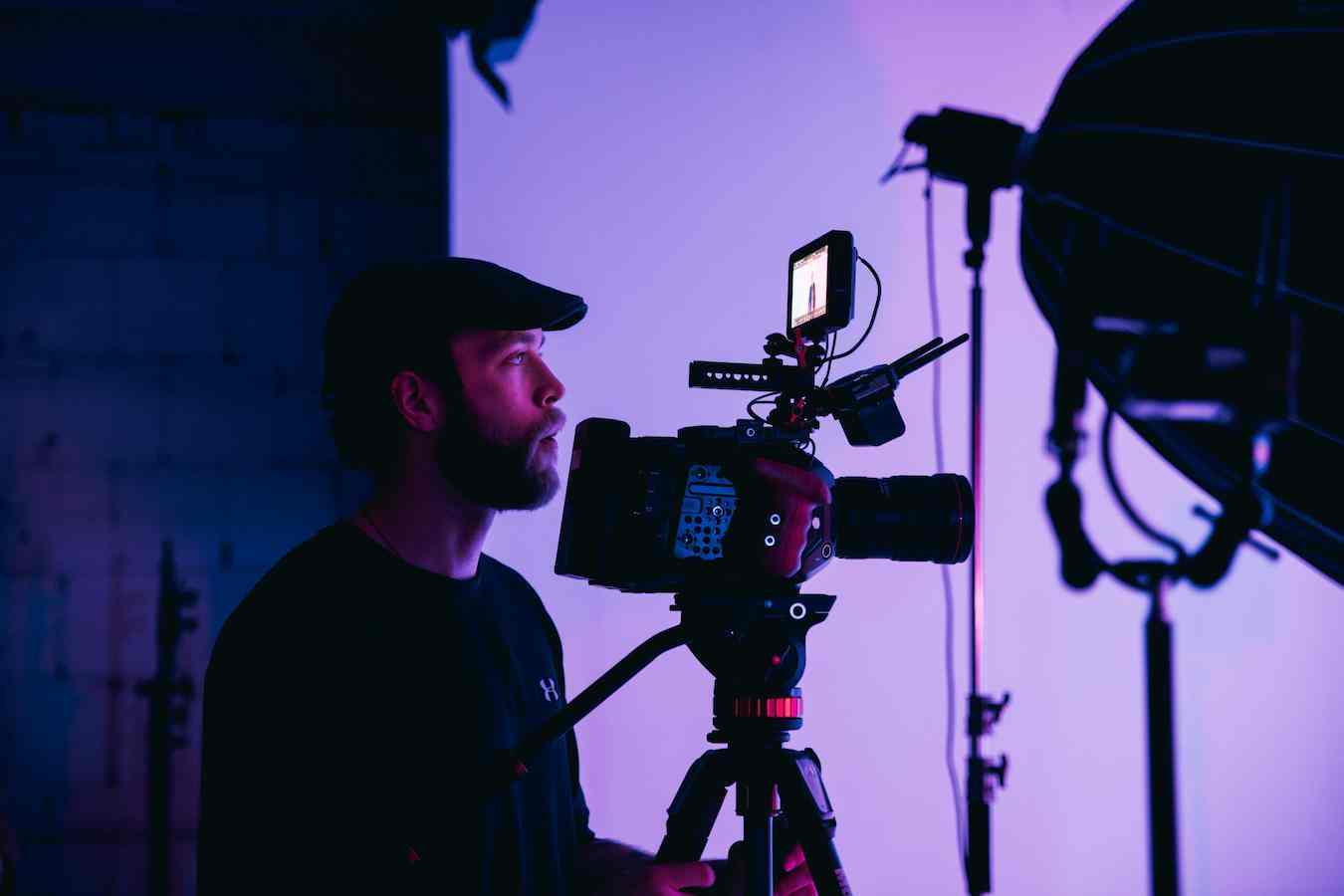
Set design and staging are essential in real estate video production. They involve adding decorative elements to make things look better and point out special parts by putting them in the right place and using light effectively. Staging is changed to appeal to the target audience and create a lifestyle that people want to achieve. High-quality photography and videography capture the staged property effectively, showcasing its best attributes. Set design and staging play a major role in creating visually captivating real estate videos that appeal to potential buyers or renters.
ii. Capture Footage
Capturing footage of a property involves a complete process aimed at presenting its most attractive attributes. To achieve this, real estate videographers strategically select angles and viewpoints to effectively show the property’s features. This includes wide shots to combine the entire property and close-up shots to highlight specific elements such as modern appliances or architectural details. When filming the interior, emphasis is placed on spacious rooms, well-designed layouts, and desirable features like high ceilings or large windows. Natural light is often used to create a bright and welcoming atmosphere. When filming the outside of the property, videographers focus on its overall attractiveness and outdoor areas. This areas include the front of the house, backyard, and any special features like pools or gardens.
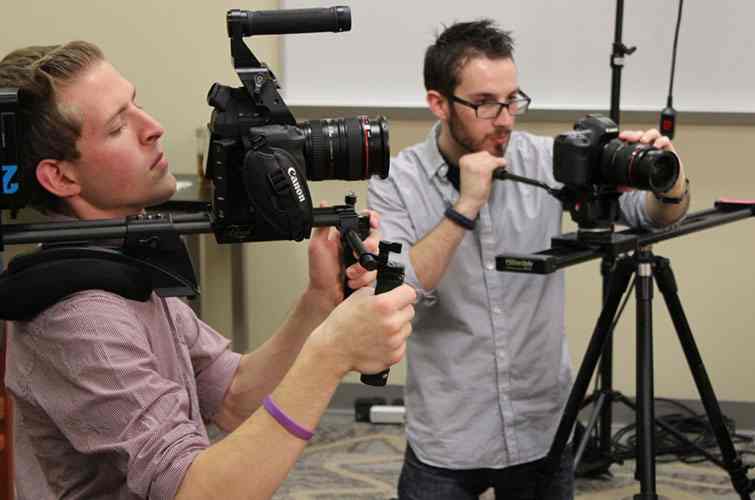
The video focuses on the property’s best features, like new facilities or useful rooms, to attract viewers. Smooth camera movements are used to make the video more interesting, and videographers make sure everything looks nice with good decorations and lighting. Multiple shots ensure enough footage for the editing process, allowing for experimentation with different compositions and angles. This careful method creates videos that show off the property’s special qualities and attract potential buyers or renters.
iii. Using Drone Footage
Including drone footage into real estate videos provides an opportunity to capture beautiful aerial views of the property and its surroundings. Drones offer unique viewpoints that traditional cameras cannot achieve. This creates complete shots that showcase the property’s layout, architecture, and features. Aerial views gives viewers a better understanding of the property’s scale and highlights its size, features, and landscaping.
Additionally, drones capture the surrounding neighborhood and this offers understanding into nearby streets, parks, and landmarks. This helps potential buyers or renters gauge the property’s location and proximity to amenities. Adding aerial footage makes real estate videos look better and more exciting, which attracts viewers to the property.
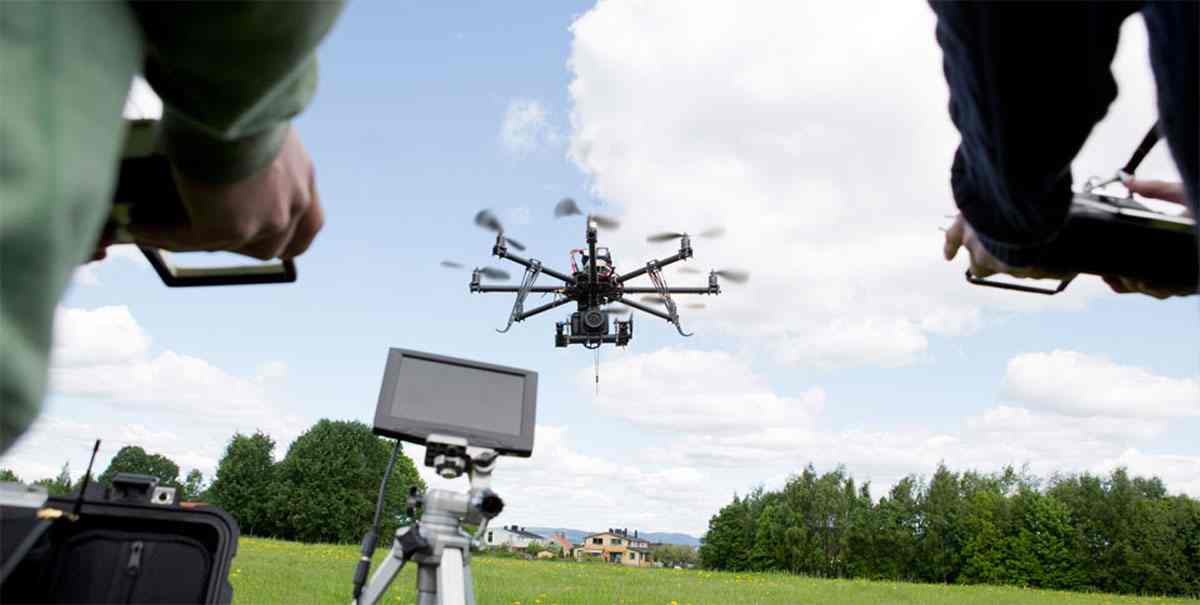
Moreover, using drone technology demonstrates a commitment to professionalism in real estate marketing. This sets he video apart and reflects positively on the real estate agent or agency. However, it is important to ensure regulatory compliance by obtaining necessary permits and permissions for aerial filming to ensure safe and legal operations. Using drone footage into real estate videos offers a range of benefits. These benefits include unique views, enhanced visual appeal, and a memorable viewing experience for potential buyers or renters.
iv. Record Interviews/Testimonials
Recording interviews or testimonials with property owners, real estate agents, or satisfied clients is a valuable way to add credibility and authenticity to real estate videos. The process begins with selecting individuals who offer understanding related to the property or real estate agency. They include property owners sharing their experiences, agents discussing the property’s features, or clients offering positive testimonials about their interactions with the agency.
Before the interview, it is important to prepare a set of questions made to highlight the property’s strengths or the agency’s professionalism. The interview setup requires a suitable location with good lighting and minimal background noise. Once everything is ready, the interview starts, with participants encouraged to share their thoughts openly. It is important to actively listen to their responses and ask follow-up questions to dig deeper into specific topics. Alongside the interviews, capturing supplementary B-roll footage(cut away video to help you tell a story) is essential to visually complement the testimonial content. This include shots of the property, agents in action, or clients interacting with the agency.

During the editing process, the interviews and B-roll footage are combined to create a matching narrative. Unnecessary footage is trimmed, audio quality is enhanced, and relevant visual elements are added. The goal is to blend the interviews smoothly into the video to make the storytelling stronger and more believable. Recording interviews or testimonials with relevant individuals allows real estate professionals to provide views that resonate with viewers and instill trust in the property or agency being promoted.
iii. Post-Production
Post-production is the phase of video production that occurs after shooting or filming is completed. It involves editing and enhancing the raw footage captured during filming to create the final video product. During post-production, various tasks are performed, including video editing, color correction, audio mixing, adding special effects or graphics, and adding music or sound effects. The goal of post-production is to clear and polish the footage to meet the desired quality standards and effectively convey the intended message or story to the audience.
i. Editing
Editing is super important when making real estate videos. It takes the raw footage and turns it into a polished final video. First, the captured footage undergoes review to select the best shots that show off the property well. After that, a storyboard is made to outline the video’s structure, ensuring a flow of content that aligns with the video’s objectives. Through precise clip trimming, unnecessary segments are eliminated to maintain an engaging pace.
Transitions are then put between clips to ensure visual continuity, enhancing the viewing experience. Sound is given equal importance, with adjustments made to volume levels and reducing background noise. Suitable music or sound effects are added to enhance the video. Text overlays are strategically placed to offer relevant details and guide viewer attention, using fonts that match the style of the video.
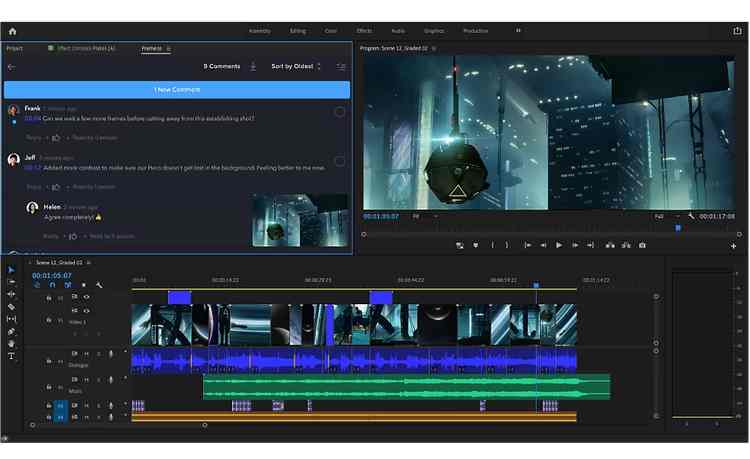
Further enhancement comes through visual effects like color correction and filters, contributing to a visually appealing style. B-roll footage is added to provide additional depth and context to the storytelling. This offers different views of the property, its surroundings, and amenities. Following an extensive review process to ensure flow and quality, necessary revisions are made based on feedback.
Finally, the completed video undergoes rendering into the desired format and resolution, ensuring compatibility across various platforms and devices. Following these editing steps, ensures real estate professionals effectively transform raw footage into an amazing video.
ii. Color Grading
Color grading is an essential part of video editing, where adjustments are made to the color and tone of the footage. This ensures consistency, improve visual appeal, and produce specific moods or atmospheres. The process involves correcting any irregularities in the footage, such as exposure issues, contrast discrepancies, or white balance problems. Additionally, color grading entails balancing the overall color to achieve a desired visual style, which involves enhancing or toning down specific colors for a matching look.
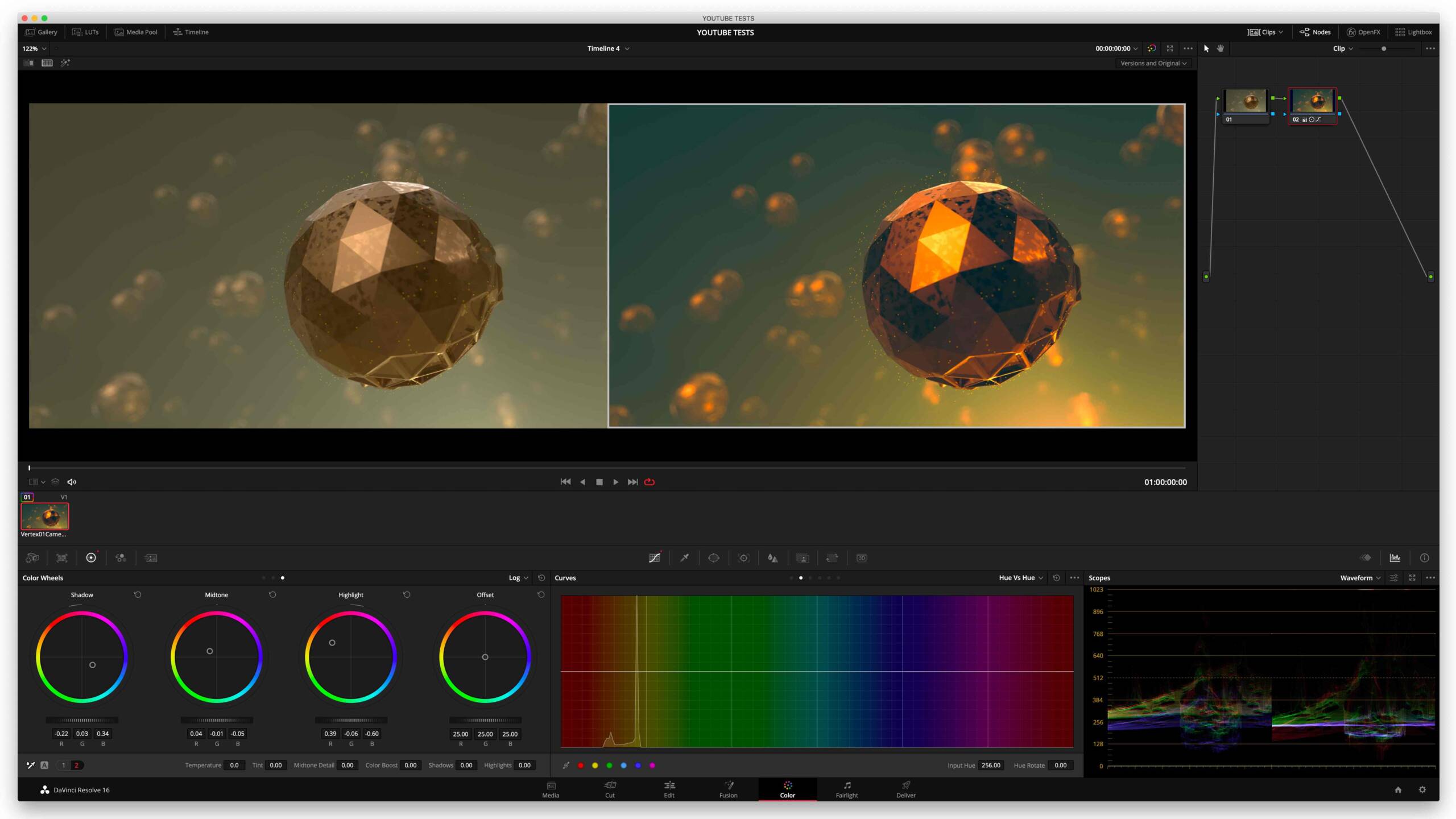
Changing color contrast makes the videos more interesting, and adjusting saturation levels controls how bright the colors appear . This makes them more clear for a lively look or less intense for a calmer appearance. Color grading makes sure footage looks good by keeping details in bright and dark areas. Software helps control this easily. Keeping all footage looking similar is important for telling a good story. Color grading also helps create feelings and moods. It is a great way to make footage better and tell stories well.
iii. Add Graphics and Branding
Adding graphics and branding to real estate videos is about including logos, contact information, and property details to strengthen the brand and provide viewers with essential information. The logo of the brand is placed in a corner of the video to ensure it’s visible, helping viewers identify the brand behind the video. Important contact details such as phone numbers and website addresses are displayed in the video. This makes it easy for viewers to reach out for more information or to inquire about the property.
Details about the property, including its address, price, and features, are also shown on the screen to help viewers understand the property better and decide if they are interested. To maintain consistency, colors, fonts, and other branding elements are used throughout the video. This ensures that viewers remember the brand and creates a visually appealing experience. Additionally, a clear call-to-action is included in the video, prompting viewers to take the next step, such as contacting the agent or visiting the website.

Real estate professionals strengthen their brand by incorporating these elements effectively,. Additionally, they provide viewers with valuable information, and encourage them to take action, contributing to the success of their marketing efforts.
iv. Voiceover and Audio Enhancement
Voiceover narration and audio enhancement are important components of real estate video production, aimed at improving the narrative delivery and audio quality of the content. Voiceovers guide viewers through the property. They emphasize its key features with a script that is carefully written to match the video and share important details clearly and in an interesting way. Using high-quality microphones helps capture voiceovers with minimal background noise, ensuring optimal clarity.
Additionally, audio levels are adjusted to maintain a consistent volume throughout the video, preventing any sudden changes that could disrupt the viewer’s experience. Background music is included to set the video’s mood and atmosphere, chosen thoughtfully to complement the narration and visuals without overshadowing them. Furthermore, sound effects are used to enhance specific moments or actions.

During the editing phase, various audio enhancements are applied to refine the overall sound quality, including volume adjustments, noise reduction, and the addition of filters or effects to enhance clarity and impact. These techniques collectively contribute to the creation of amazing real estate videos that effectively showcase the property and engage the audience.
v. Final Review and Revisions
In the final stage of real estate video production, a complete review and revision process is undertaken. This stage guarantees the accuracy, consistency, and overall quality of the edited video. The video undergoes careful examination to confirm the correctness of all information presented, including property details and contact information. Consistency is maintained throughout the video, focusing on style, tone, branding, and messaging to keep everything together. This involves checking visual elements like color grading and graphics to maintain a unified look and feel.
Furthermore, the video’s overall quality is assessed, considering visual clarity, audio clarity, and technical aspects such as resolution and aspect ratio. Any identified issues are addressed to refine the video into a professional and polished final product. Based on the review findings, necessary revisions or adjustments are implemented to enhance the video. This entail trimming or rearranging footage, refining transitions, or improving audio quality.
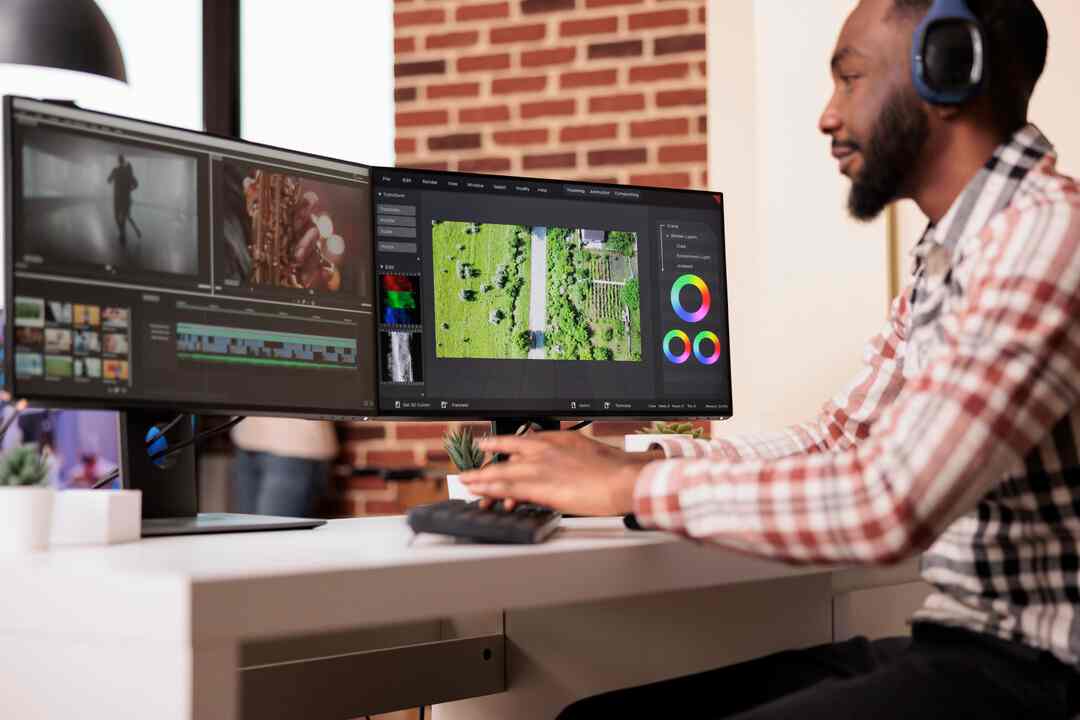
Once all revisions are completed, the video is finalized and prepared for distribution by exporting it in the appropriate format and resolution made for its intended use. Whether for online platforms, presentations, or other marketing channels. Through this review and revision process, real estate professionals ensure that their video effectively conveys the desired message. This positively reflects their brand, and resonates with their target audience.
v. Distribution and Promotion
Distribution and promotion in videography involve making the video accessible to the target audience and boosting its visibility for viewer engagement. Ultimately, distribution covers where and how the video is shared, including online platforms, social media, email, and physical copies. Promotion focuses on increasing exposure through various means like sharing on different channels, advertising, SEO optimization, influencer collaborations, and audience interaction. Both aim to reach a wider audience and drive traffic to the video, fulfilling marketing goals.
Distribution and promotion of the video entails three steps which include choosing the distribution channel, optimizing for Seo and promoting across platforms.
Choosing distribution channels involves deciding where and how the video will be shared to reach the target audience effectively. This include posting it on real estate websites, such as listings platforms or agency websites, as well as sharing it on social media platforms like Facebook, Instagram, or YouTube. Additionally, the video might be included in email newsletters sent to subscribers or featured in digital marketing campaigns.
Optimizing for SEO (Search Engine Optimization) involves making sure that the video title, description, and tags contain relevant keywords and phrases that potential viewers use when searching for similar content online. This helps improve the video’s visibility and ranking in search engine results pages, making it easier for people to discover and watch.
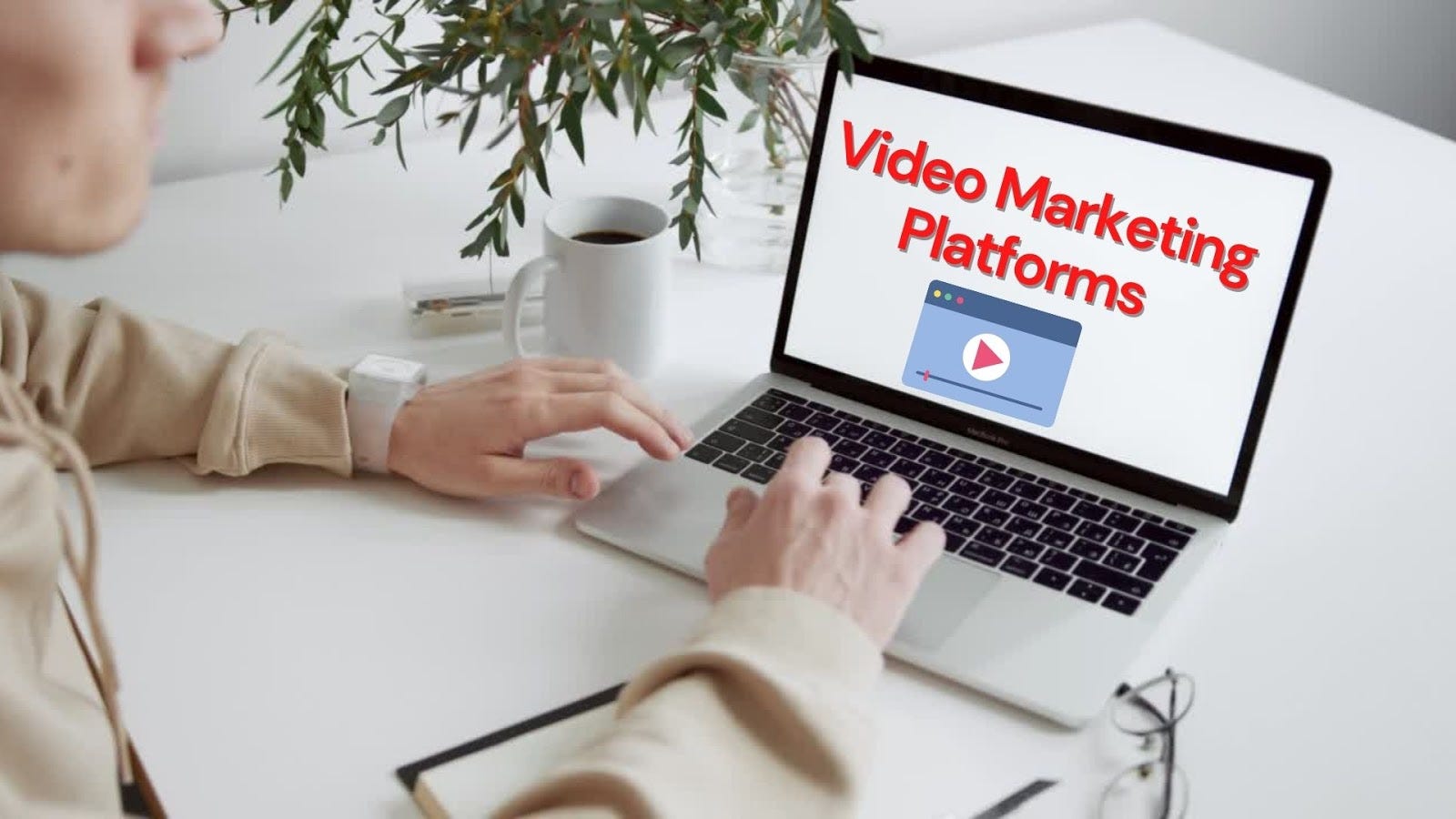
Promoting the video across platforms involves actively sharing it on various channels to maximize exposure and engagement. This includes leveraging social media platforms to share the video organically, as well as running paid advertising campaigns to reach a broader audience. Engaging with the audience by responding to comments, likes, and shares also helps to promote interaction and build relationships with viewers. This increases the video’s reach and impact.

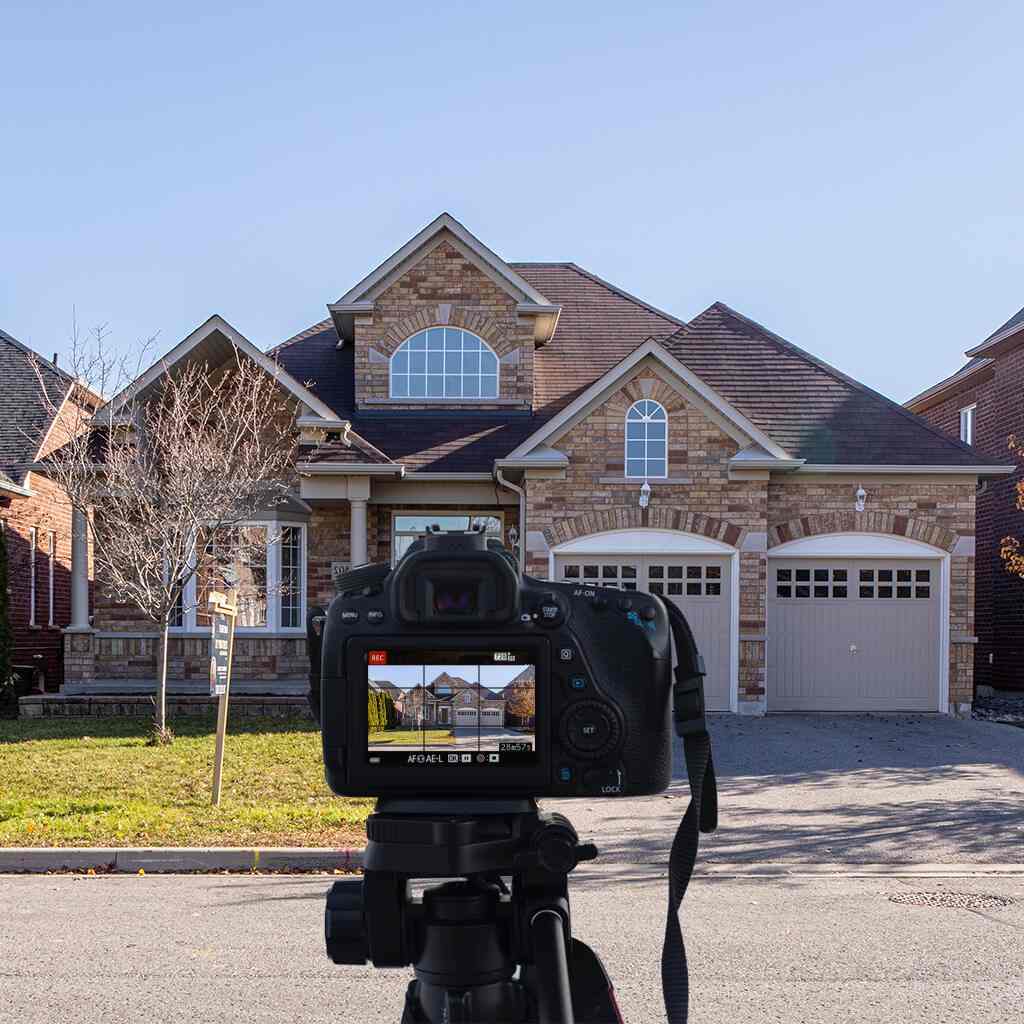

3 Comments